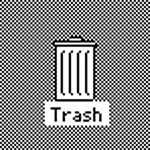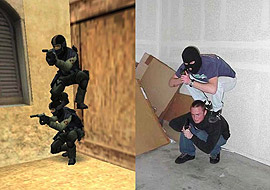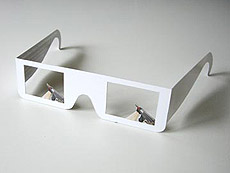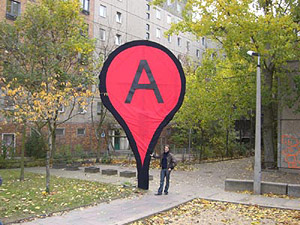Already a couple days ago during re:publica, Aram Bartholl presented an overview of his artistic work which very much focuses on the ever-increasing resonances between the digital and the analog worlds.
To illustrate what this means to him, Aram told the audience about a situation when a friend visited his studio.  He wanted to empty the trash underneath Aram’s desk, but instead of simply doing it, felt like he needed to obtain permission and asked “Can I empty the trash?”. In that situation the two realized that they were acting like an operating system and its user, applying the paradigm that Apple introduced to the public in 1984.
He wanted to empty the trash underneath Aram’s desk, but instead of simply doing it, felt like he needed to obtain permission and asked “Can I empty the trash?”. In that situation the two realized that they were acting like an operating system and its user, applying the paradigm that Apple introduced to the public in 1984.
Trained as an architect, Aram naturally got interested in how spaces are perceived in virtual environments, mostly in the context of games where, in between DOOM in 1993 and the current craze about Second Life, most of the action has happened. Because of those games, the mainstream-audience is by now quite familiar with the simulation of three-dimensional environments, partly because in games – simply because your virtual life depends on it. Actually some gamers are so into it, that also they carry over parts from the game experience and make it part of their daily lives (like habitually checking if there’s a terrorist crouching behind the door) or even re-enacting things from the game.
 These breaches between the realms of the everyday life and game narratives is what many of Bartholl’s works use as a starting point. One example is de_dust, basically the infamous crate from one of the most played maps in the game Counter-Strike. On a one pixel equals one centimeter-basis, he re-created the crate and put it up at several locations in Berlin, watching people figuring out why it seems so strangely familiar to them. Another piece which proved to be very popular with the gaming-crowd are his First Person Shooter-glasses (and they usually really don’t dig media art). Cut out from a simple postcard, they put the terrorists’ AK 47 in front of your eyes, absurdly poking in from the right side, just as in Counter-Strike.
These breaches between the realms of the everyday life and game narratives is what many of Bartholl’s works use as a starting point. One example is de_dust, basically the infamous crate from one of the most played maps in the game Counter-Strike. On a one pixel equals one centimeter-basis, he re-created the crate and put it up at several locations in Berlin, watching people figuring out why it seems so strangely familiar to them. Another piece which proved to be very popular with the gaming-crowd are his First Person Shooter-glasses (and they usually really don’t dig media art). Cut out from a simple postcard, they put the terrorists’ AK 47 in front of your eyes, absurdly poking in from the right side, just as in Counter-Strike.
 How identity is communicated in massive multiplayer games is another thing that greatly differs from the physical world. In many games, players have their names hovering above their character which leads to a very special kind of social behaviour and also makes for an interesting group portrait-culture (photo from Joi Ito‘s album). Aram transferred this into physical space in his project WoW by cutting out letters and attaching them to a kind of fishing rod which then is carried by a person behind the “wearer” while he or she is walking around (video).
How identity is communicated in massive multiplayer games is another thing that greatly differs from the physical world. In many games, players have their names hovering above their character which leads to a very special kind of social behaviour and also makes for an interesting group portrait-culture (photo from Joi Ito‘s album). Aram transferred this into physical space in his project WoW by cutting out letters and attaching them to a kind of fishing rod which then is carried by a person behind the “wearer” while he or she is walking around (video).
Views of urban space is an interesting realm to which Google with their mapping applications are currently developing a quasi-monopoly on. Yet, it’s kind of funny how for example places are being marked in Google Maps – its slightly weird red markers don’t scale with the aerial photographs below, cast a gigantic shadow but already have gained an iconic quality to them.  The work Maps deals with this relationship in the way that Aram simply built one of the drop-shaped markers for real and put it up in Berlin. Not to much amazement since people are probably used to crazy artworks standing around.
The work Maps deals with this relationship in the way that Aram simply built one of the drop-shaped markers for real and put it up in Berlin. Not to much amazement since people are probably used to crazy artworks standing around.
If this is giving you the same déjà vu that the gamers have with the de_dust crates, it might be because you’ve seen Aram’s Random Screen at this year’s Transmediale. Also check out Jonah Brucker-Cohen’s interview with him over at Gizmodo.
Related: Speed, Punchcard Pixels and Bits on Location.







